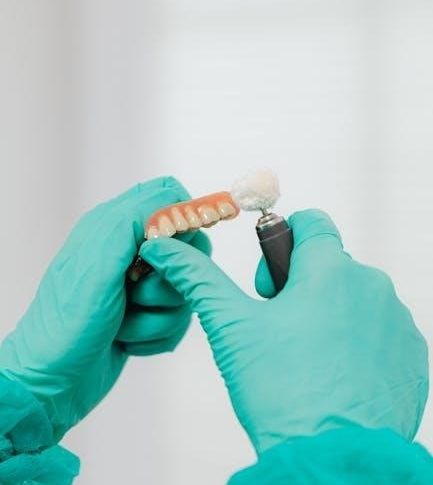
chemistry 101 lab manual answers
Chemistry 101 Lab Manual Answers⁚ A Comprehensive Guide
This guide is designed to provide students with a comprehensive understanding of the concepts and techniques covered in a typical Chemistry 101 laboratory course. Whether you’re struggling with a particular experiment, seeking clarification on a concept, or simply looking for extra practice, this resource will serve as your trusted companion.
Introduction
Welcome to the exciting world of Chemistry 101! This lab manual is your guide to a fascinating journey of discovery, experimentation, and understanding the fundamental principles that govern the behavior of matter. The laboratory component of Chemistry 101 is an integral part of your learning experience, providing hands-on opportunities to observe chemical reactions, analyze data, and develop critical thinking skills. This comprehensive guide aims to provide you with the necessary tools to navigate the lab, understand the experiments, and interpret the results effectively.
Throughout this manual, you will encounter a wealth of information designed to enhance your understanding of chemistry. Each section is carefully crafted to address specific aspects of the lab, from safety precautions to common lab experiments. We strongly encourage you to read each section thoroughly, as it will provide you with valuable insights and practical tips to succeed in your lab endeavors.
Remember, the lab is not just about following procedures; it’s about developing a deeper understanding of the concepts you are learning. So, approach each experiment with curiosity, a willingness to ask questions, and a keen eye for detail. By embracing this approach, you will not only gain valuable knowledge but also develop essential skills that will benefit you in your future academic and professional pursuits.
Types of Chemical Reactions
The world of chemistry is a dynamic realm where substances interact and transform, giving rise to a diverse range of chemical reactions. Understanding the different types of chemical reactions is crucial for comprehending the underlying principles of chemistry and for conducting laboratory experiments effectively. In this section, we will delve into the key categories of chemical reactions, providing you with a solid foundation for analyzing and interpreting the experiments you will perform in the lab.
One fundamental way to classify chemical reactions is based on the changes in the chemical bonds involved. In synthesis reactions, two or more reactants combine to form a single product, creating new bonds. For instance, the reaction of sodium (Na) with chlorine (Cl2) to form sodium chloride (NaCl) is a classic example of a synthesis reaction. In contrast, decomposition reactions involve the breakdown of a single reactant into two or more products, breaking existing bonds. The decomposition of hydrogen peroxide (H2O2) into water (H2O) and oxygen gas (O2) is a common example.
Another important category is single displacement reactions, where a more reactive element displaces a less reactive element from a compound. For example, zinc (Zn) will displace copper (Cu) from a solution of copper sulfate (CuSO4), resulting in the formation of zinc sulfate (ZnSO4) and copper metal. Double displacement reactions, on the other hand, involve the exchange of ions between two reactants, leading to the formation of two new compounds. A familiar example is the reaction between silver nitrate (AgNO3) and sodium chloride (NaCl) to produce silver chloride (AgCl) and sodium nitrate (NaNO3).
Finally, combustion reactions are characterized by the rapid reaction between a substance with an oxidant, typically oxygen, releasing heat and light. The burning of fuels like wood or propane is a common example of combustion. By understanding these fundamental types of chemical reactions, you will be well-equipped to analyze and interpret the reactions you encounter in your laboratory experiments.
Safety Precautions in the Lab
The chemistry laboratory, while a fascinating environment for exploring the wonders of chemical reactions, can also present potential hazards if safety protocols are not strictly adhered to. Therefore, understanding and implementing safety precautions is paramount to ensuring a safe and productive laboratory experience. This section will outline essential safety guidelines that must be followed at all times in the chemistry lab.
First and foremost, always wear appropriate personal protective equipment (PPE) such as safety goggles, a lab coat, and closed-toe shoes. Safety goggles protect your eyes from splashes and fumes, while a lab coat shields your skin and clothing from accidental spills. Closed-toe shoes provide protection for your feet in case of spills or broken glassware. It is also crucial to avoid eating, drinking, or applying cosmetics in the lab, as these activities can lead to accidental ingestion or contamination.
Before beginning any experiment, carefully read the instructions and familiarize yourself with the potential hazards associated with the chemicals and equipment involved. Always handle chemicals with care, using the appropriate tools and techniques. Never mix chemicals without specific instructions, as unexpected reactions can occur. When diluting acids, always add acid to water, never water to acid, to prevent potentially dangerous heat generation.
In the event of a spill or accident, immediately inform your instructor and follow their instructions. Know the location of safety equipment like fire extinguishers, eyewash stations, and first aid kits. By following these safety precautions diligently, you can minimize risks and create a safe and productive laboratory environment.
Lab Equipment and Techniques
The chemistry lab is equipped with a variety of tools and instruments, each designed for specific purposes. Understanding the function and proper usage of these tools is essential for successful experimentation. This section will provide an overview of common lab equipment and techniques used in Chemistry 101.
Basic glassware includes beakers, flasks, graduated cylinders, and test tubes. Beakers are used for holding and mixing liquids, while flasks are more suited for reactions and storage. Graduated cylinders are used for precise measurement of liquid volumes, while test tubes are ideal for small-scale reactions and observation.
Other important equipment includes balances for measuring mass, hot plates for heating solutions, and stirring devices for mixing. Pipettes and burettes are used for accurate liquid transfer, while funnels aid in filtration processes.
Techniques commonly employed in the lab include titration, a technique used to determine the concentration of a solution by reacting it with a solution of known concentration. Spectrophotometry, a technique that measures the absorbance or transmittance of light through a solution, can be used to determine the concentration of colored solutions. Chromatography, a technique used to separate different components of a mixture, is another important tool in the chemist’s arsenal.
By mastering the proper handling and usage of these equipment and techniques, you will be well-equipped to conduct successful and informative experiments in the Chemistry 101 lab.
Common Lab Experiments
Chemistry 101 labs offer a hands-on approach to understanding fundamental chemical concepts. Common experiments delve into areas like chemical reactions, solutions, and properties of matter. These experiments provide valuable experience in applying theoretical knowledge to real-world scenarios.
One classic experiment involves the synthesis of alum, a compound commonly used in water treatment and other applications. This experiment demonstrates the principles of chemical reactions and purification techniques. Another common experiment involves the determination of the molar mass of a volatile liquid, where students apply concepts of gas laws and vapor pressure to determine the molecular weight of an unknown substance.
Titration experiments are another staple, allowing students to determine the concentration of an unknown solution by reacting it with a solution of known concentration. These experiments provide valuable experience in using precise techniques and interpreting data to determine quantitative results.
Other experiments focus on the properties of solutions, including determining the solubility of different compounds and investigating the effects of temperature and concentration on solubility. These experiments help students visualize and quantify the behavior of solutions, solidifying their understanding of basic solution chemistry.
Through these hands-on experiences, students gain valuable practical skills and a deeper understanding of the fundamental concepts of chemistry.
Understanding Chemical Concepts
Chemistry 101 labs are not just about performing experiments; they are designed to foster a deep understanding of fundamental chemical concepts. These labs provide a platform to visualize and explore theoretical principles, solidifying your grasp of the subject matter.
For instance, experiments involving chemical reactions help you understand the different types of reactions, such as synthesis, decomposition, single displacement, and double displacement reactions. You’ll learn how to predict products, balance chemical equations, and interpret the stoichiometry of reactions.

Experiments involving solutions delve into concepts like concentration, molarity, and dilution. You’ll learn how to prepare solutions of specific concentrations, perform dilutions, and calculate the concentration of unknown solutions through titration.
Furthermore, labs involving properties of matter, such as density, melting point, and boiling point, help you understand the relationship between physical properties and chemical structure. You’ll learn how to measure these properties, analyze data, and draw conclusions about the nature of the substances being studied.
By working through these experiments and analyzing the results, you gain a deeper understanding of the theoretical concepts presented in your lectures. You’ll be able to apply this knowledge to solve problems, interpret data, and make predictions about chemical systems.
Lab Report Writing
Lab reports are an essential part of any chemistry course, serving as a record of your experimental work and a platform to demonstrate your understanding of the concepts involved. A well-written lab report should be clear, concise, and organized, presenting your findings and analysis in a logical and professional manner.
A typical lab report includes several sections, each with a specific purpose⁚
- Introduction⁚ Briefly introduce the experiment’s objective and the relevant theoretical background.
- Materials and Methods⁚ Clearly describe the materials used and the step-by-step procedure followed.
- Results⁚ Present your experimental data in a clear and organized manner, often using tables, graphs, or figures.
- Discussion⁚ Analyze your results, explaining their significance and drawing conclusions based on your observations.
- Conclusion⁚ Summarize your findings, restating the main conclusions drawn from the experiment.
The lab report writing process provides an opportunity to critically evaluate your experimental work, analyze the data, and draw meaningful conclusions. It allows you to demonstrate your scientific reasoning and communication skills, which are crucial for success in any scientific field.
Remember to adhere to the specific guidelines provided by your instructor, ensuring that your report is well-formatted, properly cited, and free from plagiarism.
Online Resources for Chemistry 101
The digital age has revolutionized access to educational resources, and Chemistry 101 is no exception. A wealth of online resources can help you navigate the complexities of this subject, from mastering fundamental concepts to tackling challenging lab experiments.
One of the most valuable online resources is Khan Academy, which offers a comprehensive library of free video lectures, practice exercises, and articles covering a wide range of chemistry topics. These materials are presented in a clear and engaging manner, making it easier to grasp even the most complex concepts.
For interactive learning experiences, consider exploring online simulations and virtual labs. These platforms allow you to experiment with different chemical reactions, manipulate variables, and observe the results firsthand, enhancing your understanding of chemical principles.
Additionally, numerous online chemistry forums and communities provide a space for students to connect with peers, ask questions, and receive support from experienced tutors and educators. These platforms offer a collaborative learning environment where you can share knowledge, discuss concepts, and overcome challenges together.
Remember to critically evaluate the reliability and accuracy of the information you find online, ensuring that the sources are credible and reputable. By leveraging the abundance of online resources available, you can significantly enhance your learning experience and achieve success in your Chemistry 101 course.
Practice Problems and Solutions
To solidify your understanding of Chemistry 101 concepts and prepare for exams, regular practice is crucial. Practice problems offer a valuable tool for reinforcing theoretical knowledge and applying it to real-world scenarios. This section provides a comprehensive guide to practice problems and their solutions, empowering you to master the subject matter.
Start by reviewing the practice questions provided in your lab manual or textbook. These problems are carefully curated to align with the specific topics covered in your course, ensuring a targeted approach to your study. As you work through these problems, pay close attention to the steps involved in solving them, as this will help you develop a systematic approach to tackling similar problems in the future.
If you encounter difficulties with a particular problem, don’t hesitate to seek help from your instructor, teaching assistant, or classmates. Engaging in discussions with others can provide valuable insights and alternative perspectives, enhancing your understanding of the concepts.
Online resources, such as Khan Academy and Chegg, offer vast collections of practice problems and their solutions, covering a wide range of chemistry topics. These platforms allow you to test your knowledge, identify areas requiring further attention, and develop a deeper understanding of the subject matter.
Remember, practice makes perfect. By diligently working through practice problems and analyzing their solutions, you’ll gain confidence in your abilities and prepare yourself for success in your Chemistry 101 course.
Tips for Success in Chemistry 101 Lab
Navigating a Chemistry 101 lab can be both exciting and challenging. To maximize your success in this hands-on learning environment, it’s crucial to approach it with a strategic mindset. Here are some tips to help you excel in your Chemistry 101 lab experience⁚

Firstly, always prioritize safety. Chemistry labs involve potentially hazardous materials, so understanding and adhering to safety protocols is paramount. Wear appropriate safety gear, such as goggles and lab coats, and follow your instructor’s guidelines meticulously.
Secondly, prepare thoroughly before each lab session. Read the experiment instructions carefully, understanding the objectives, procedures, and potential hazards. Review any relevant concepts or theories from your textbook or lecture notes. This preparation will ensure you are well-equipped to navigate the lab efficiently and effectively.
Thirdly, engage actively during the lab session. Pay close attention to your instructor’s demonstrations and instructions, and don’t hesitate to ask questions if you are unsure about any aspect of the experiment. Take detailed notes, observing and recording your observations and data accurately.
Finally, approach lab reports with meticulousness. Organize your observations, data, and calculations clearly and concisely, following the formatting guidelines provided by your instructor. Analyze your results, drawing meaningful conclusions and relating them to the theoretical concepts studied.
By embracing these tips, you’ll not only navigate your Chemistry 101 lab with confidence but also gain a deeper understanding of the practical applications of chemical principles.






